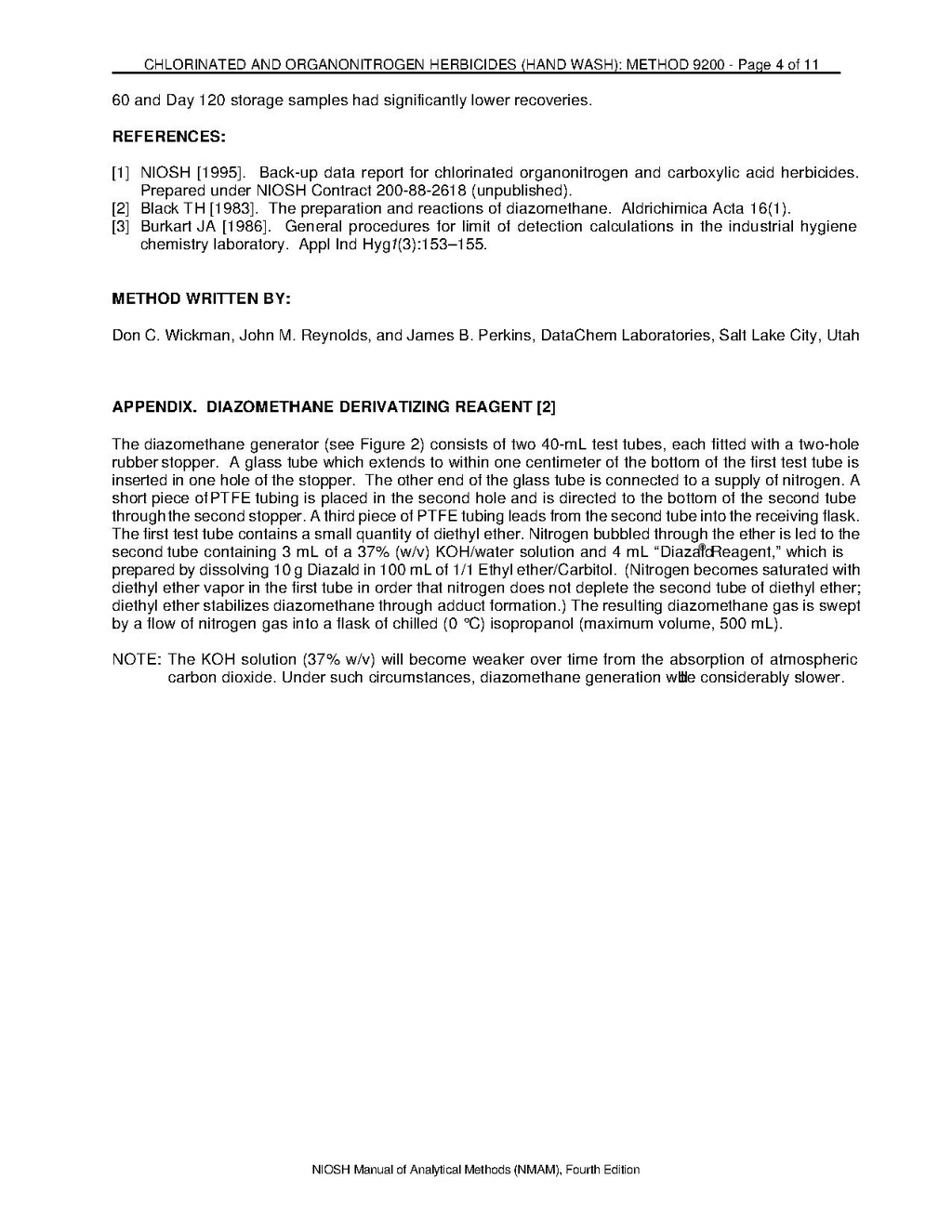CHLORINATED AND ORGANONITROGEN HERBICIDES (HAND WASH): METHOD 9200 - Page 4 of 11
60 and Day 120 storage samples had significantly lower recoveries. REFERENCES: [1] NIOSH [1995]. Back-up data report for chlorinated organonitrogen and carboxylic acid herbicides. Prepared under NIOSH Contract 200-88-2618 (unpublished). [2] Black TH [1983]. The preparation and reactions of diazomethane. Aldrichimica Acta 16(1). [3] Burkart JA [1986]. General procedures for limit of detection calculations in the industrial hygiene chemistry laboratory. Appl Ind Hyg1(3):153–155.
METHOD WRITTEN BY: Don C. Wickman, John M. Reynolds, and James B. Perkins, DataChem Laboratories, Salt Lake City, Utah
APPENDIX. DIAZOMETHANE DERIVATIZING REAGENT [2] The diazomethane generator (see Figure 2) consists of two 40-mL test tubes, each fitted with a two-hole rubber stopper. A glass tube which extends to within one centimeter of the bottom of the first test tube is inserted in one hole of the stopper. The other end of the glass tube is connected to a supply of nitrogen. A short piece of PTFE tubing is placed in the second hole and is directed to the bottom of the second tube through the second stopper. A third piece of PTFE tubing leads from the second tube into the receiving flask. The first test tube contains a small quantity of diethyl ether. Nitrogen bubbled through the ether is led to the ® second tube containing 3 mL of a 37% (w/v) KOH/water solution and 4 mL “Diazald Reagent,” which is prepared by dissolving 10 g Diazald in 100 mL of 1/1 Ethyl ether/Carbitol. (Nitrogen becomes saturated with diethyl ether vapor in the first tube in order that nitrogen does not deplete the second tube of diethyl ether; diethyl ether stabilizes diazomethane through adduct formation.) The resulting diazomethane gas is swept by a flow of nitrogen gas into a flask of chilled (0 °C) isopropanol (maximum volume, 500 mL). NOTE: The KOH solution (37% w/v) will become weaker over time from the absorption of atmospheric carbon dioxide. Under such circumstances, diazomethane generation will be considerably slower.
NIOSH Manual of Analytical Methods (NMAM), Fourth Edition
